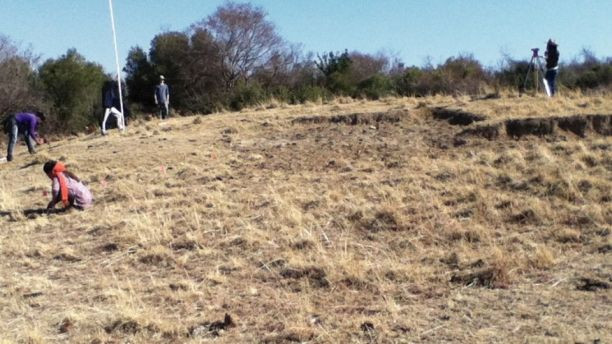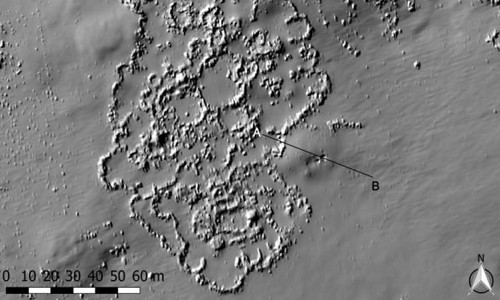Remains of a hundred-year-old ancient city in South Africa
The team found the rest of ancient man-made architecture hidden underground thanks to laser scanning technology.
Archaeologists found traces of a city that existed centuries ago in Sukerbosrand, South Africa, using advanced laser technology, Fox Newshom reported today. Local people have known about the ruins here for generations, according to Karim Sadr, a professor at the University of Witwatersrand.

Archaeological site in Sukerbosrand, South Africa.(Photo: Fox News).
"Archaeologists from my university dug several buildings there in the 1970s and 1980s. But people just assume that these ruins are scattered houses or villages , " Sadr said. He uses LiDAR aerial laser scanning technology to discover the ancient city.
"Only when taking the LiDAR image to the western hill about 20km 2 wide and checking it in detail, I started to discover the angles of artificial architecture that is almost impossible to see in good ground pictures. shooting high above the trees covered , " he explained. The photos show a series of hidden stone structures underground.
Sadr used the first LiDAR 10km 2 survey technology at the end of 2014 and the remaining area in 2015. In 2016, after observing the captured image, he realized that it was not scattered buildings. is part of a city.

LiDAR image of archaeological site.(Photo: Fox News).
The Tswana-speaking community has lived in this city since the 15th century to about 200 years ago. There are a number of other Tswana cities that also exist in this area. Tswana cities collapsed after the civil war in the early 19th century.
"I counted about 800 houses here and probably more. However, it is difficult to determine the number of people in the city at different times, because not all houses are occupied and some houses are available. "I guess there are more people than others. I guess the city has never had more than 10,000 people at once," Sadr said.
Scientists plan to use LiDAR technology to explore a wider area around archaeological sites. However, LiDAR cannot help them explore the city and many structures need to be checked directly.
"We want to excavate some parts of the archaeological site. Because the relics are generally not deep, there is no need to dig up too much soil," Sadr said. He also raised issues that need to be addressed such as the spatial limits of city clusters, borders, external trade links, and the reason the city was created centuries ago.
- 9,000-year-old remains reveal the collapse of the old city
- Hundreds of years old turned on the original reveal the medieval remains
- Discovered the remains of the ancient city built by the former Trojan prisoner
- Find the world's oldest arrow in South Africa
- Rediscover the 6,500-year-old remains
- Discovered the old city of 3400 years old in Israel
- Shocking the 'bird' remains in 5,000 year old tombs
- Mexico studied 30 sets of ancient remains
- The story of ancient oak 'matchmaking' for 100 lovers but is always lonely
- The hundred-year reishi mushroom grows under ancient roots
- Discovering the old city with a 2,000-year-old penile image?
- Egyptian remains 3300 years with the ring
 Discovered an ancient centipede fossil 99 million years old
Discovered an ancient centipede fossil 99 million years old Discovered bat-like dinosaurs in China
Discovered bat-like dinosaurs in China Discovered a 200-year-old bronze cannon of the coast
Discovered a 200-year-old bronze cannon of the coast Discover 305 million-year-old spider fossils
Discover 305 million-year-old spider fossils